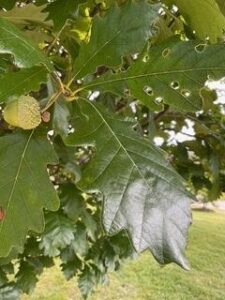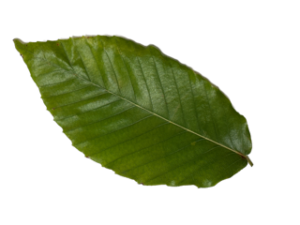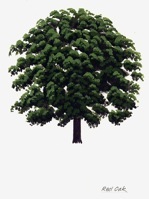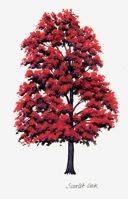Oaks are part of the Beech family. In Canada, Oaks are divided into two groups, Red Oaks and White Oaks. Both have simple leaves, meaning each leaf stalk has one large leaf. The Red Oak leaf is bristly and has pointed tips. The White Oak leaf has rounded lobes without bristles.
While all Oaks are part of the same family, some Oak trees look more like cousins than siblings. For example, the Scarlet Oak has glossy green leaves, with finger-like lobes that turn deep red in the autumn. The Swamp White Oak and Regal Prince Oak, a combination (cultivar) of a Swamp White and columnar English Oak, have leaves that have almost no lobes.

The Oak’s fruits are called “acorns” – one-seeded nuts – with a tough, smooth, shell and a scaly cap.
Oaks can live for centuries and make up a great proportion of the deciduous forests of North America. Oak trees can be spreading or more upright and are considered symbols of strength and stability. Oak is prized as hardwood and is used for furniture, flooring, and wine barrels.
Beeches are part of the Oak family. The most common type of Beech in eastern North America is the one found on the Tree Walk, the American Beech. It grows to more than 30 metres, or 100 feet, tall. The leaves are smooth, with veins running to a central stem. They are large, oval in shape, and turn a deep bronze in autumn.

There are four species of Oak on the Tree Walk and one Beech.





